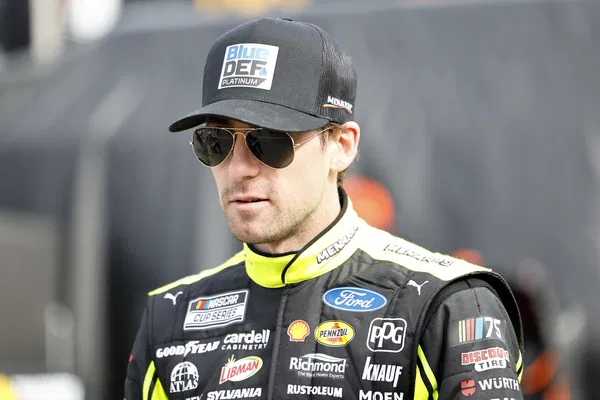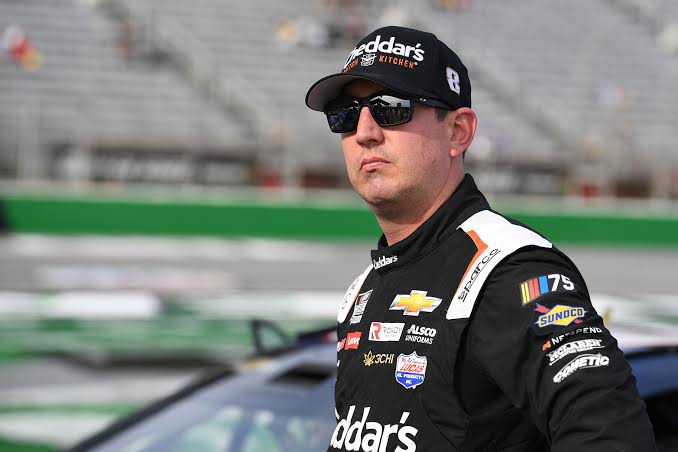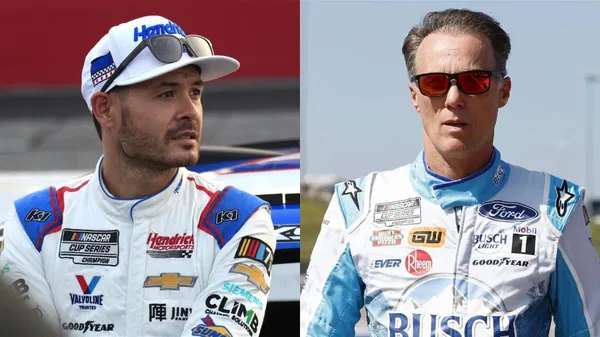Imagine a high-stakes playoff race, and the reigning Cup Series champion crashes out on the very first lap. It seems almost unthinkable, yet that’s exactly what happened when Ryan Blaney found himself involved in an early wreck at Watkins Glen, stunning fans and fellow drivers alike. The incident unfolded during the opening moments of the race, triggered by contact between Corey LaJoie and Kyle Busch. The result? Significant damage to Blaney’s car and an unexpected twist for one of NASCAR’s top drivers.
Blaney, representing Team Penske, was furious after being prohibited from re-entering the track following his team’s attempt to repair the vehicle. While his fans were vocal in their disappointment, and Blaney himself was visibly upset, NASCAR officials stood firm, citing safety regulations that had been in place for years. The situation highlighted a long-standing policy within the sport and sparked a larger conversation about the rules governing damaged cars during a race.
The focal point of Blaney’s anger was NASCAR’s Damaged Vehicle Policy (DVP), a rule enforced after any significant crash during a race. In his frustration, Blaney lashed out, asking, “Give us a chance to fix it. How are they going to dictate if we’re done or not?” This reaction captured the passion and competitiveness that drives NASCAR’s top athletes. Blaney’s desire for a second chance on the track was clear, but it soon became apparent that the rulebook left no room for negotiation.
Brad Moran, NASCAR’s Cup Series managing director, later explained why the officials’ decision was unavoidable. Speaking to Sirius XM NASCAR, Moran detailed how the situation unfolded in accordance with NASCAR’s existing regulations. Once Blaney’s car was towed to the garage, it automatically disqualified him from rejoining the race. Moran explained, “If you are in an incident and you’re on the DVP, you cannot drive the vehicle back to your pit stall. You are out of the race at that point. If you drive it into the garage or behind the wall, at that point you’re out of the race.”
The DVP rule, which was implemented in 2017, aims to prioritize safety and efficiency during races. Its purpose is to prevent cars that are too heavily damaged from returning to the track, where they could pose further risks to other drivers. No matter how disappointed Blaney was, the rules were clear: once a car is sent to the garage, it’s finished for the day.
Although Blaney’s crash, followed by the DVP ruling, ignited criticism among fans, Moran further elaborated that Blaney’s vehicle was so damaged that even without the rule, it was unlikely he could have finished the race. The damage was substantial, particularly to the front suspension and steering, which made a return to competition impossible. Moran added, “It was totally unfortunate. I totally get Blaney’s frustration. But he was involved in that incident with the 6, which did end up busting the front suspension or steering.”
In an interesting twist, even Denny Hamlin, a veteran driver with his own history of crashes, sided with NASCAR’s decision to stick with the established rule. Hamlin stressed the importance of maintaining the integrity of the rulebook, noting that changing the rules on a whim—no matter how emotionally charged the moment—could set a dangerous precedent.
Hamlin addressed Blaney’s frustration, particularly regarding the argument about flat tires. Blaney contended that NASCAR has previously allowed teams to tow cars with flat tires back to pit road and let them continue racing. However, Moran clarified that the flat tire recovery program is distinct from the DVP, allowing drivers with only flat tires to rejoin the race. Unfortunately for Blaney, his car’s damage extended far beyond just flat tires, which meant the DVP applied, not the recovery program.
Even if Blaney’s team had managed to make repairs in the short window provided, the severity of the damage, especially to the steering system, made a comeback unlikely. Hamlin pointed out that while Blaney’s frustration was understandable, NASCAR had adhered to the rules, which are designed to limit costly repairs and avoid unnecessary risks. “I mean, they went by the rules,” Hamlin said, adding that the DVP rule also prevents teams from overspending on repairs, a cost-cutting measure that benefits everyone in the long run.
Hamlin’s argument highlighted the larger issue at play: sticking to the rules is vital for ensuring safety, cost-effectiveness, and fairness in NASCAR. He made it clear that rules shouldn’t be altered just because of a temporary uproar, no matter how emotional or significant the situation might seem. “Should we kneejerk reaction just change it because there’s an uproar? Absolutely not,” Hamlin argued, emphasizing that the consistency of rule enforcement is critical to the sport.
In the end, Ryan Blaney’s frustration was understandable, but the explanations provided by NASCAR officials and the support from Hamlin left little room for debate. The DVP is a rule designed to ensure safety and limit costs, and while it may have cut Blaney’s day short, it also reinforced the importance of adhering to established guidelines. As the reigning Cup champion, Blaney will likely learn from this experience and focus on avoiding similar incidents in the remaining playoff races, ensuring that his title defense stays on track.
Ryan Blaney Couldn’t Keep Calm as NASCAR Director Shuts Down His Rant, Persisting Controversial DVP Ruling




